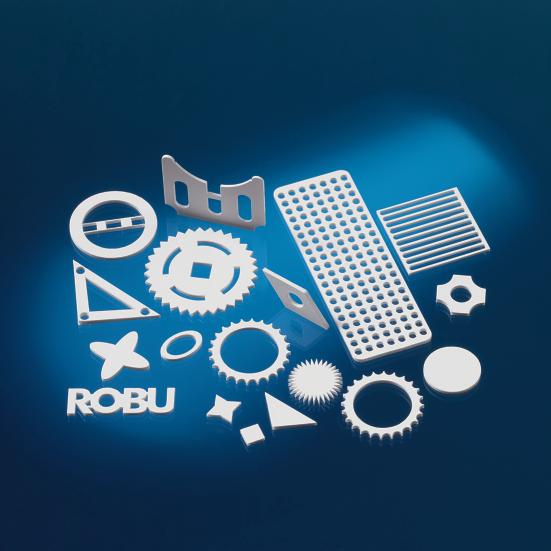The glass filter specialist Robu has developed a porous quartz sintered material. Based on amorphous silica, this material not only promises to open up interesting possibilities for electrochemical and electro-kinetic applications, but is also suitable for fluid technology functions in process engineering.
The quartz sintered material is especially convincing owing to the effective combination of its properties. Its temperature resistance exceeds 1,000 °C and its resistance to frequent temperature shocks is considered excellent. At the same time, this Robu prod-uct – based on amorphous silica – is extremely resistant to aggressive media. These features alone make the ceramic material, offered as part of the Vitrapor product line, an attractive prospect for a variety of innovative applications in industry and research.
In the shape of fine quartz membranes, the new sintered material can be used for fluid technology functions in electro-osmotic pumps, for example, where the porosity of more than 50 %, the high surface charge (zeta potential) and the existence of macropores between 0.5 and 1.0 µm in size have a positive effect in combination with the high chemical and thermal resistance. As no sodium dissolves at the surface of the material, it is also eminently suited for closed loops in which slow poisoning of the medium must be avoided at all cost.
The innovative Robu sintered material is basically ideal for the broad spectrum of filtration technology applications. Especially when stability and non-deformability are vital, it represents a genuine alternative to customary fibre fabrics or non-wovens. This is also true for the sterile filtration class 0.45 µm. In this context, it is undoubtedly a great advantage that the degree of porosity can be adjusted to the requirements of each manufacturing process by varying the pore size. The monomode and multimode pore diameters range from 0.5 to more than 5 µm.
Moreover, Robu manager Stephan Curland perceives a host of potential applications in general mechanical and plant engineering for the material developed by his company: “At this year’s Achema, industrial microwave manufacturers, amongst others, showed keen interest in our quartz sintered material. These users were particularly impressed by its enormous temperature shock resistance.“ Since the specific expansion of quartz – i.e. pure silica – is very low, the new material resists thermal shocks of up to 1,000 °C within a few seconds. This feature is enhanced by the material’s po-rous structure. In view of its high thermochemical resistance, the material is even suitable for fuel cell technology. And thanks to its very low electric conductivity, high dielectric strength and low dielectric loss rate, it can also be employed for a variety of tasks in microelectronics and electrical engineering.
Even during the development phase, it was evident that the new material would be predestined for many laboratory applications and analyses in medical and biotechnology, such as so-called lab-on-a-chip processes in modern chemical engineering or sensitive manufacturing of micro-arrays in genetics.
Universal character
These few examples suffice to confirm the innovative and universal character of the quartz sintered material. This application versatility is to a large extent determined on the one hand by production and machining processes like the tape casting technology and on the other hand by the use of modern laser technology, enabling Robu – the manufacturer – to achieve almost any dimension or surface structure depending on the specific requirements and demands of the customer.
“Since we work with high-speed CO2 laser cutters, there are almost no limits on the two-dimensional shaping of the tape,“ Stephan Curland says. In practice, this means that tape thicknesses of less than 1.0 mm to more than 10 mm and very filigree geometries with extremely detailed surfaces are possible. Cut widths of just 0.05 mm enable high-precision shaping – even of the smallest elements. Perforated plates, thicker discs, very thin membranes, miniaturised sample holders and many other elements can now be manufactured, depending on the application in question.
cpp 406
More about Robu
Share:







